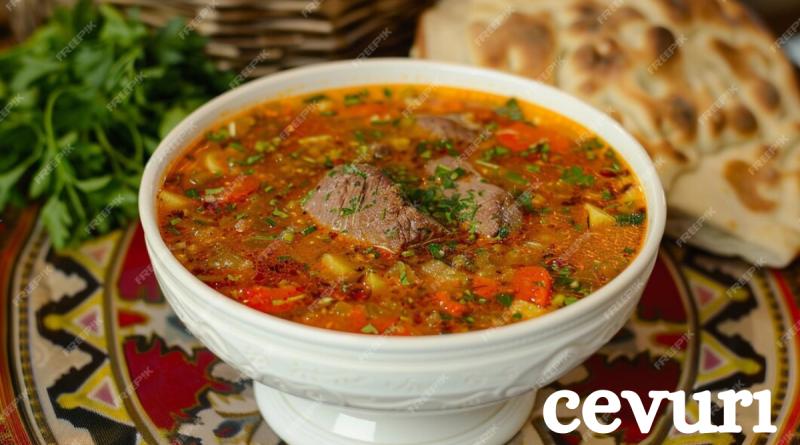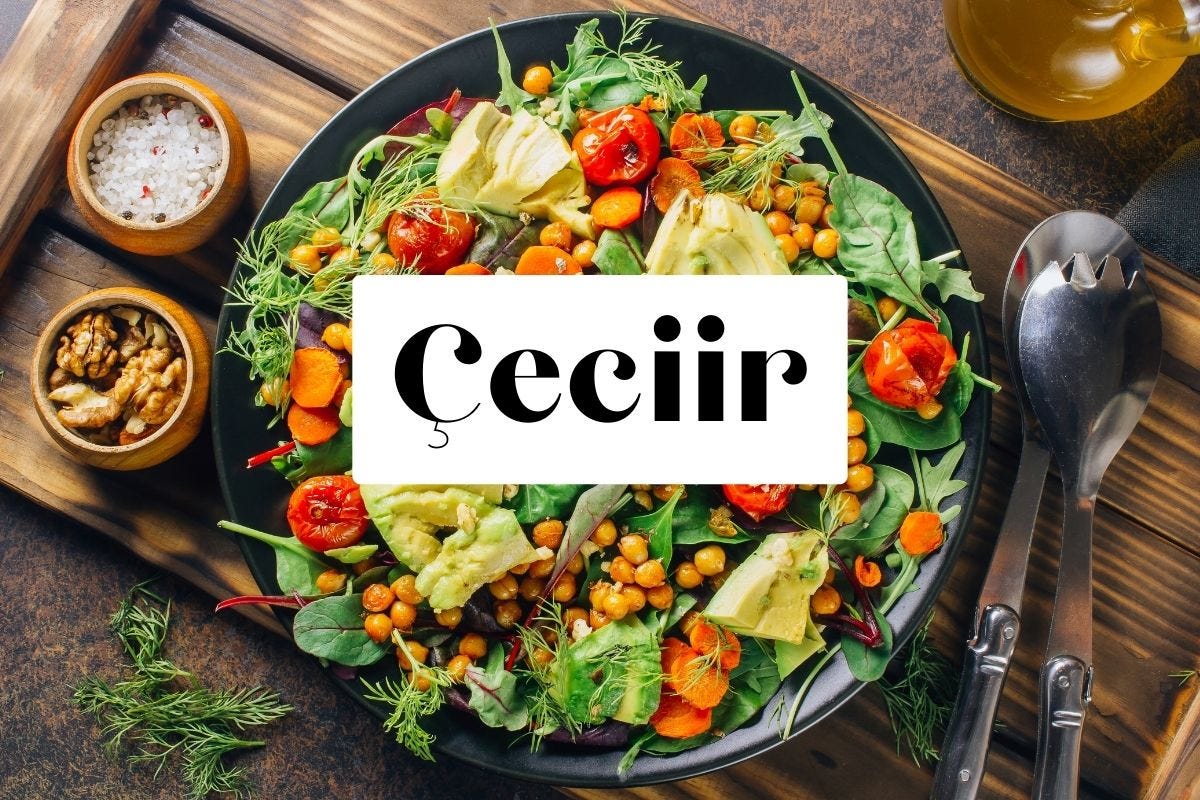Turkish cuisine is renowned for its unique flavors, rich history, and cultural diversity. One of the lesser-known but equally vibrant branches of this culinary tradition is Çeciir, a regional style that highlights Turkey’s diverse local ingredients, traditional cooking methods, and the influence of various civilizations. Rooted in the heart of Anatolia, Çeciir cuisine brings together the authenticity of rural flavors with the refined techniques passed down through generations.
Origins of Çeciir Cuisine
Çeciir, like much of Turkish cuisine, is shaped by its geographical location and the various peoples who have inhabited the region over centuries. From the Seljuks to the Ottomans, the historical layers in Çeciir cuisine reflect a fusion of nomadic traditions, Mediterranean influence, and Middle Eastern touches. The abundance of fresh ingredients, the varied climate, and Turkey’s position as a bridge between continents all contribute to the distinctive flavors of this region.
Key Ingredients
The core of Çeciir cuisine is simplicity with an emphasis on natural, locally sourced ingredients. Here are a few essential components:
- Wheat and Bulgur: These grains are fundamental in many dishes, ranging from bread to hearty salads. Bulgur, made from parboiled wheat, is often used as the base for pilafs and stews.
- Legumes: Lentils, chickpeas, and beans are central to many Çeciir dishes. These provide rich, earthy flavors and are a crucial source of protein.
- Vegetables and Greens: Seasonal vegetables such as eggplant, tomatoes, peppers, zucchini, and various leafy greens are frequently used in stews, salads, and side dishes.
- Meat: Lamb and beef dominate Çeciir’s meat dishes, with kebabs and stews being popular. Poultry is also common, particularly in combination with rice or bulgur pilafs.
- Dairy: Yogurt is a staple, often served as a side or incorporated into soups and sauces. In Çeciir, yogurt-based dishes like yayla çorbası (a yogurt and rice soup) are highly prized.
Signature Dishes
- Çeciir Kebabı: A dish representative of the Çeciir region’s love for lamb, this kebab is traditionally grilled over an open flame and seasoned with a blend of local spices such as sumac, cumin, and coriander.
- Bulgur Pilavı: This is a staple side dish made from bulgur wheat, cooked with tomatoes, peppers, onions, and a splash of olive oil. It’s often paired with grilled meats or vegetable stews.
- Ezo Gelin Soup: A traditional red lentil soup that originated in the Anatolian region. It features lentils, rice, tomato paste, and a variety of herbs and spices, resulting in a thick, hearty soup served year-round.
- Dolma: Stuffed vegetables, particularly grape leaves filled with rice, herbs, and pine nuts. Dolma is a classic part of Çeciir cuisine, served as an appetizer or a main dish.
- Karnıyarık: A popular eggplant dish where the vegetable is stuffed with a mixture of ground meat, onions, garlic, and tomatoes, then baked to perfection.
Cooking Techniques
The art of cooking in Çeciir revolves around traditional methods such as slow cooking in tandır (an underground clay oven) and grilling over open flames. These techniques preserve the natural flavors of the ingredients, allowing the quality of the local produce and meats to shine. The slow cooking process, in particular, is often used in stews, giving dishes a deep, complex flavor that develops over time.
Cultural Importance
In Çeciir, food is more than just sustenance; it’s a celebration of community and heritage. Meals are a social event, where friends and family gather around large tables to share the bounty of the land. Festivals and celebrations often feature traditional dishes, with recipes passed down from generation to generation. Many households still maintain old-world cooking methods, ensuring that the culinary heritage of the region remains intact.
Desserts
No Turkish meal is complete without a sweet ending. In Çeciir cuisine, desserts are often simple but rich in flavor:
- Baklava: Although known throughout Turkey, Çeciir’s version of baklava is often made with local honey and pistachios, giving it a distinct taste.
- Şekerpare: Small semolina-based pastries soaked in lemon-scented syrup, providing a sweet and tangy contrast to the richness of the main courses.
- Lokma: A fried dough dessert that is crispy on the outside and soft on the inside, usually soaked in syrup or honey and dusted with cinnamon.
Çeciir in Modern Times
While Çeciir cuisine remains rooted in its traditional past, it has also evolved to meet contemporary tastes. Modern chefs from the region are experimenting with new ingredients and techniques while still paying homage to the rich history of the cuisine. In larger cities across Turkey and beyond, Çeciir-inspired restaurants are gaining popularity, introducing a broader audience to the authentic flavors of this unique culinary style.
Conclusion
Çeciir cuisine is a testament to the rich culinary traditions of Turkey, blending ancient techniques with locally sourced ingredients to create hearty, flavorful dishes that tell the story of a region steeped in history. Whether it’s the smoky flavor of grilled kebabs or the delicate balance of herbs and spices in a lentil soup, Çeciir offers an authentic and deeply satisfying culinary experience that reflects the essence of Turkish hospitality.
FAQs
1. What is Çeciir cuisine?
Çeciir cuisine is a regional branch of Turkish culinary tradition, known for its rich use of local ingredients, traditional cooking methods, and influences from Anatolia’s diverse cultural heritage.
2. What are the key ingredients in Çeciir cuisine?
Key ingredients include wheat, bulgur, lentils, chickpeas, lamb, yogurt, and seasonal vegetables such as eggplant, tomatoes, and peppers.
3. What is a signature dish of Çeciir cuisine?
One of the signature dishes is Çeciir Kebabı, a grilled lamb dish seasoned with local spices. Other popular dishes include Bulgur Pilavı, Ezo Gelin Soup, and Karnıyarık.
4. How is Çeciir cuisine different from other Turkish regional cuisines?
Çeciir cuisine emphasizes slow cooking techniques like tandır (underground clay oven) and open flame grilling. The dishes are typically simpler in preparation but focus on bringing out the natural flavors of fresh, locally sourced ingredients.
5. What desserts are popular in Çeciir cuisine?
Baklava, Şekerpare, and Lokma are popular desserts in Çeciir cuisine. These desserts are often syrup-based and use ingredients like honey, pistachios, and semolina.
6. Is Çeciir cuisine spicy?
While Çeciir cuisine uses a variety of spices like cumin, sumac, and coriander, it is not typically considered overly spicy. The focus is on enhancing the natural flavors of the ingredients.
7. Can I find vegetarian options in Çeciir cuisine?
Yes, Çeciir cuisine has many vegetarian dishes, such as Bulgur Pilavı, Dolma (stuffed vegetables), and various vegetable stews and salads.
8. Where can I experience Çeciir cuisine outside of Turkey?
Many Turkish restaurants around the world may feature dishes from the Çeciir region. Additionally, modern Çeciir-inspired restaurants are emerging in larger cities globally.
9. What are common cooking techniques used in Çeciir cuisine?
Common cooking techniques include slow cooking in tandır ovens, open flame grilling, and stewing, which help develop deep, rich flavors in the dishes.


 Blog4 months ago
Blog4 months ago
 Life style4 months ago
Life style4 months ago
 Tech5 months ago
Tech5 months ago
 Tech5 months ago
Tech5 months ago
 Life style5 months ago
Life style5 months ago
 News5 months ago
News5 months ago
 Tech5 months ago
Tech5 months ago
 Blog5 months ago
Blog5 months ago
